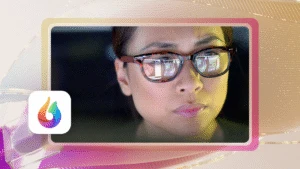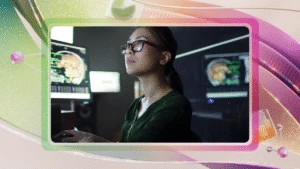Mother/baby post-partum assessments in the home: using technology to save time and overhead
At HIMSS this year, we hosted Ruthi Moore, Director of Nursing at the Navy Marine Corps Relief Society (NMCRS), in our Microsoft booth. Ruthi shared her organization’s story on how they successfully transitioned their visiting nurses to use the Surface Pro 3 during home visits with other healthcare organizations and with me.
Molly: Ruthi, tell me a little more about your organization and the Nursing program.
Ruthi: NMCRS is a non-profit whose main purpose is to help Navy and Marine Corps families with financial emergencies. NMCRS has additional programs designed to improve the quality of life for families, too. One of these programs is the Visiting Nurse Program (VNP), which was started in 1922 and focuses on providing health education, resource information and emotional support to families who may be stationed far away from their usual support systems.
Molly: What were some of your challenges that led you to consider changing the workflow and implementing technology for your nurses? How has the Microsoft Surface helped your nurses?
Ruthi: NMCRS was slow to bring the VNP into the computer age, and that was intentional. Our CIO and I wanted to find a tool that would help us accomplish our goals without interfering with the face-to-face contact that is the most important part of our job. The main qualities we were looking for in a computer for our nurses were light weight, a touch screen, full integration with our office computer programs, and ease of adoption and use. Our nurses vary in age from 28-74 and have a wide range of capabilities and limitations when it comes to computers. I didn’t want to hire new nurses; I wanted them to have a program they could use to continue their outstanding work. The Surface has met all those requirements, and was the only device we found that did – even though we tested approximately 8 other devices.
Molly: How has the Surface changed how your nurses document their work?
Ruthi: Using the Surface has enabled our nurses to pay more attention to the patient and family and has reduced the time needed to complete their documentation. Before the Surface, we were using paper records. Now, we have touch screens that take only seconds to mark the answers to questions we ask or to complete assessments we are doing. We can focus our attention on the patient – where it belongs – and we no longer worry about missing important body language since we don’t need to spend extra time on paper documentation or lengthy computer entries.
Molly: How did the nurses feel about transitioning to the Surface?
Ruthi: I expected significant push-back, but actually have had very little. One of the nurses summed up the opinion of many of the nurses. She said, “I never expected to like using the computer but now I can’t imagine going back to something else. I am more engaged with the patient and no longer worry about finishing my documentation. When I walk out of the home visit, my “paperwork” is done. I love it!”
Molly: Ruthi, why you like the Surface as a nurse administrator?
Ruthi: The Surface is so easy to use. It is lightweight and can be held in either portrait or landscape orientation, which is handy when we are doing patient education on different topics. It has good connectivity (each nurse carries an AT&T MiFi) and only in the most remote areas is connectivity an issue. Everything we are doing in the home on the Surface is automatically sent back to our main server when we have finished the visit, so other nurses working with the same family have immediate access to what was done and what remains to be done during the next visit. One of the things the nurses have commented favorably on is the sharing of records when patients move from one location to another. It takes only seconds to transfer an entire record and have another nurse take over the care for that family. We have many families who move across the country, and since ours is a mobile population, the ability to quickly share information has been the biggest difference. As a supervisor, I have found the Surface to be a dream come true. I can see every record as soon as the visit is done. Quality Improvement is easy and providing feedback to each nurse is as simple as sending an email. More patients are being seen because records are completed in a more timely fashion; fewer issues or follow up steps are dropped; I can identify potential issues faster and bring them to the attention of all the nurses before bad habits get established.
Molly: If you were speaking with a colleague at another home health agency, what would you tell them about your experience with the Surface?
Ruthi: Be sure nurses are involved with the design and development of the program being used on the Surface-or really any new technology or workflow you consider in practice! We collaborated with Microsoft so that we had an application that allowed us to work with the patients the way we needed to while benefiting from technology that would help us improve efficiency and productivity. If you don’t like the work flow you currently have, figure out what you want before you start adding technology. For us, the Surface quickly became a part of our daily routine. The Surface will help you tremendously if you let it. It is truly a “work horse” for our nurses!
Have a comment or opinion on this post or a question for the author? Please send us an email or let us know on Facebook or via Twitter.




